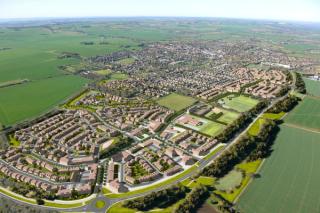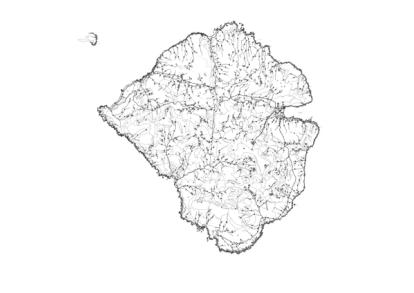
Rum Community Action Plan
- Client Name
- Planning Aid Scotland (PAS) and the Isle of Rum Community Trust (IRCT)
- Location
- Isle of Rum, Scotland

Challenge
Members of the SLR Place team have for several years been Associates with Planning Aid Scotland (PAS), a charitable organisation set up to help communities interact with the planning system. SLR acted as masterplanner, associated with PAS to deliver an impartial engagement process for the Isle of Rum Community Trust (IRCT).
Solution
The resultant Community Land Use Plan for IRCT’s ownership also considered how that land might be integrated with land in Scottish Natural Heritage (SNH) ownership. This innovative Community Land Use Plan, designed to reverse population decline on the Isle of Rum and deliver opportunities for sustainable living, was approved by the Highland Council as supplementary planning guidance.

The overall aims of the IRCT include increasing the population of the island, which involves the critical first step of providing suitable accommodation in the immediate future to stabilise the current turnover of people living on the island, followed by identifying opportunities for employment and longer-term sustainable growth. In order to achieve this there was a need to identify suitable sites for new housing, as well as commercial opportunities, while determining the capacity of principally Kinloch Village and its setting alongside Loch Scresort, to take this development and growth.
The approach to engagement was based on achieving a partnership approach through genuine participation. Key to this was detailed research and preparation, selection and design of effective engagement techniques that were appropriate to the audience and site and the involvement of key engagement professionals (including SLR) throughout the process. This involved site visits, detailed landscape analysis, meeting some of the key stakeholders (eg IRCT board members, SNH representatives, Highland Council staff), plus a deliberately informal approach to introducing the project to the residents of the islands, including attendance by the project team at a community social event. Dedicated engagement with the children and young people on the island, parents, and the primary school teacher was also undertaken. Other workshops followed the initial introductory consultation and were organised around a series of “community forums” and “drop-in sessions” to obtain more detailed input from stakeholders. The “community forums” were designed as more structured facilitated discussion sessions on the issues the project team identified as arising. The overall aim was to ensure as many voices as possible were heard and offer a variety of times and approaches rather than have one single event, and also allow the opportunity for one-to-one discussion, following on from the Visit 1 approach.
Opportunities were also offered for people to take the project team out on site as part of the event or to arrange to do this at a later.
Impact
The findings of the engagement process and landscape analysis undertaken by the PAS project team forms the basis of the Isle of Rum Community Land Use Plan that was approved as supplementary guidance as part of the emerging West Highlands and Islands Local Development Plan. The Community Land Use Plan (CLUP) represents SLR's commitment to working with communities and charities such as Planning Aid Scotland. The Highland Council have recently referenced the methodology and product as a benchmark for engagement specifically for encouraging community action and as of 2018 new sustainable housing is being delivered on the island.
“The Highland Council has supported the aims of this engagement-based project and believes that this kind of community-led plan could be a model for other communities in its area.”
Tim Stott, Principal Planner, The Highland Council

Source: Esri, DigitalGlobe, GeoEye, i-cubed, USDA, USGS, AEX, Getmapping, Aerogrid, IGN, IGP, swisstopo, and the © Crown copyright and database rights 2014 Ordnance Survey 0100031673 GIS User Community









